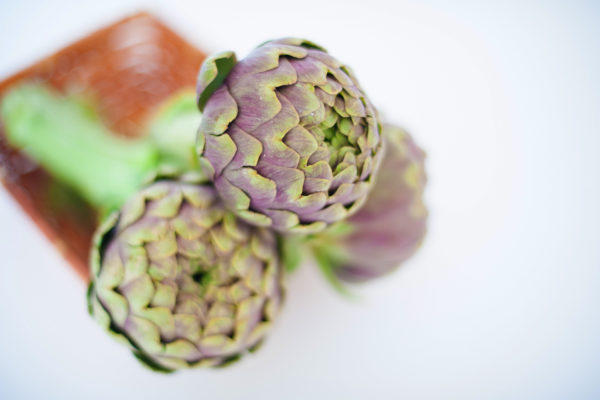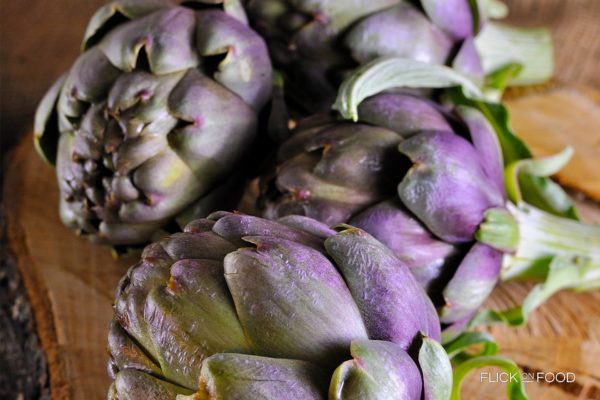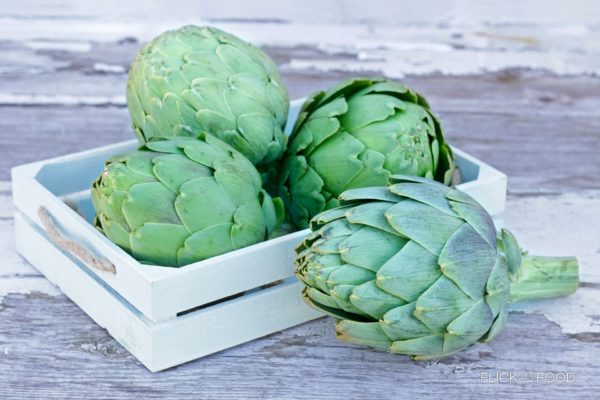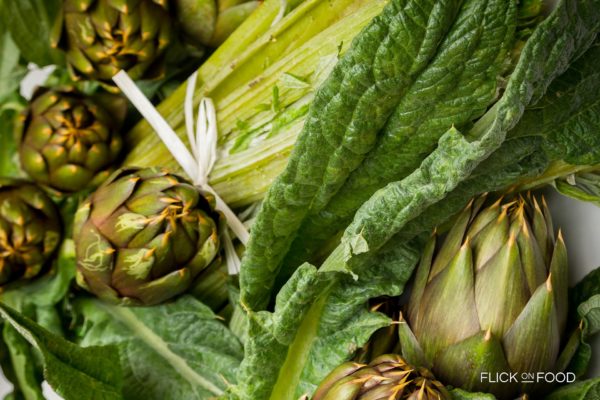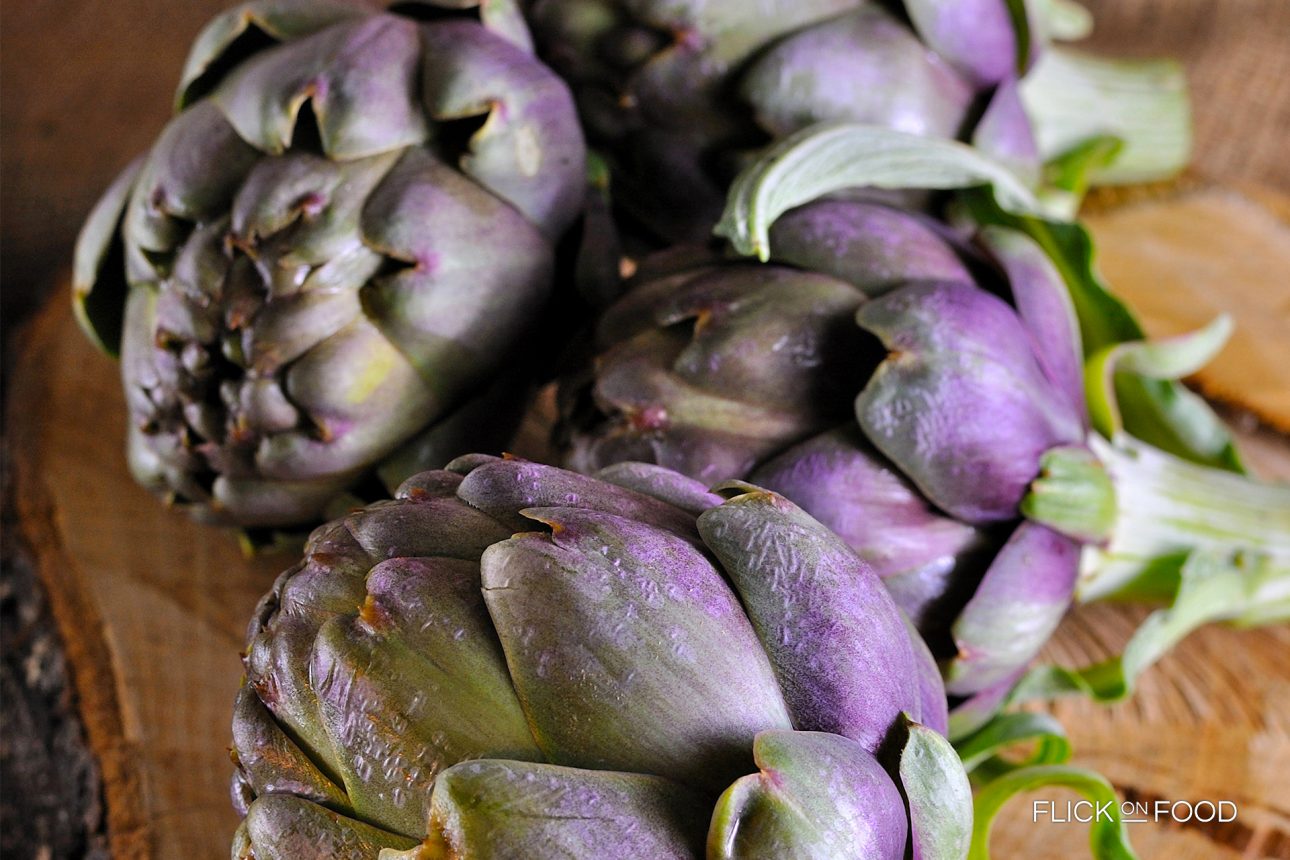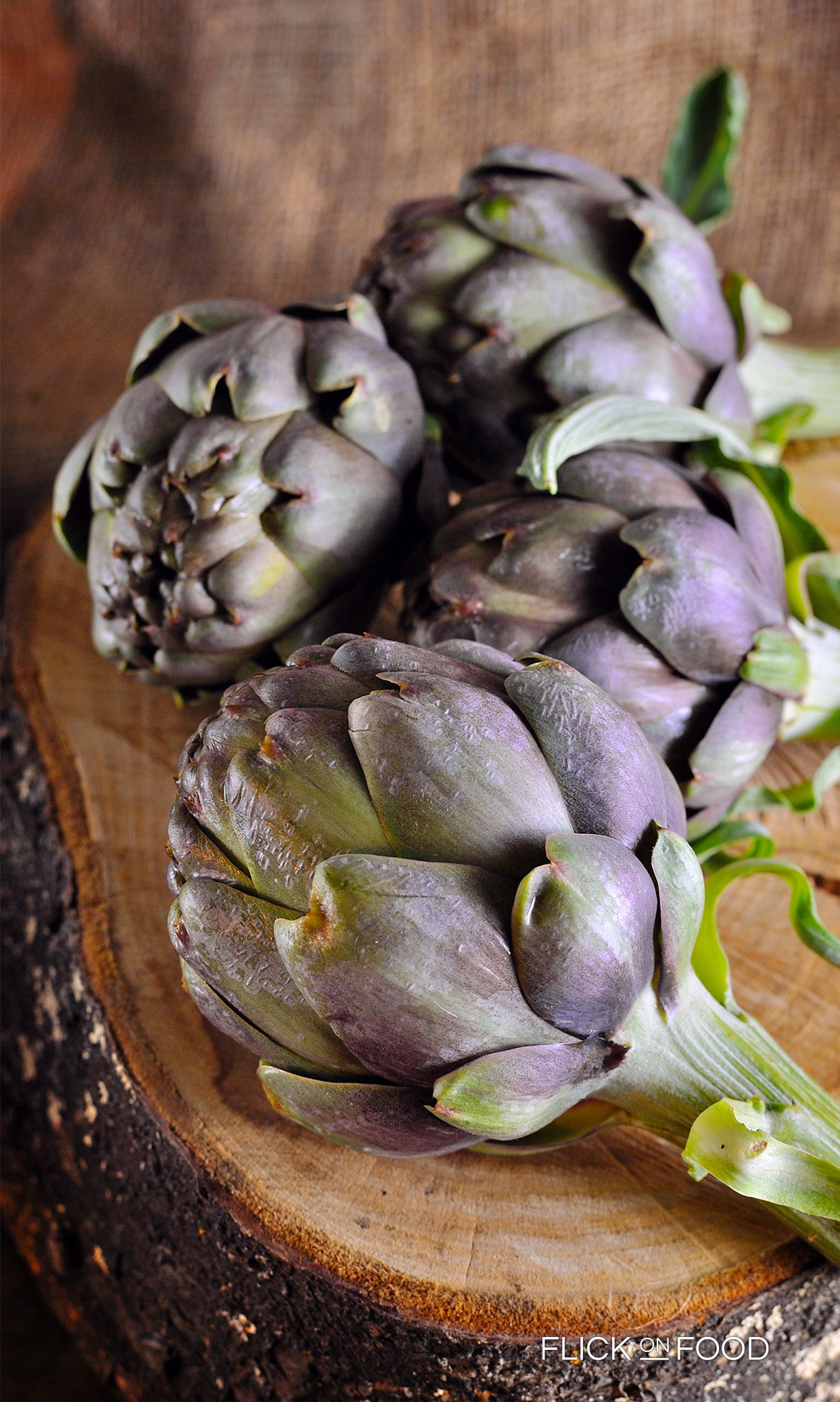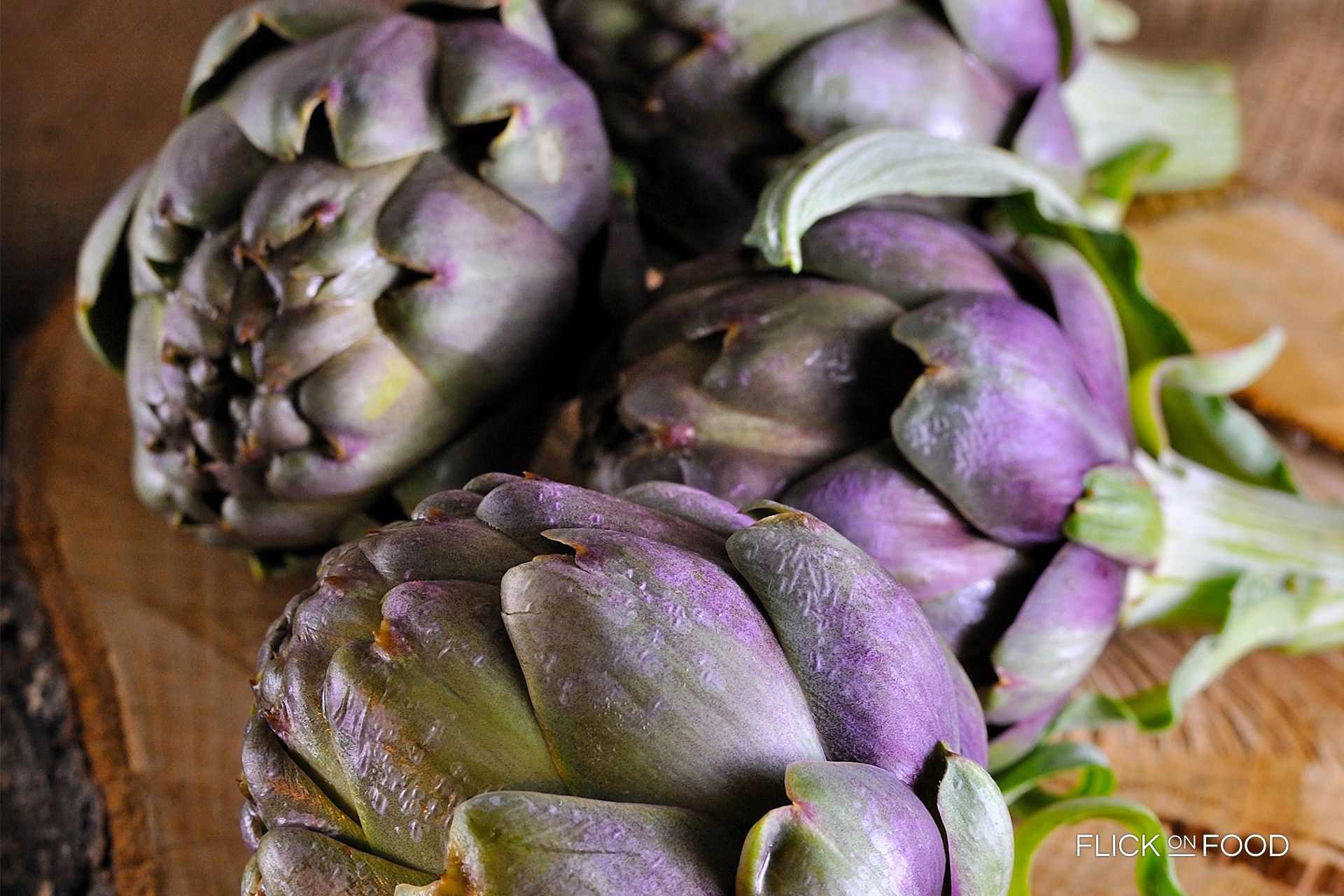
Eaten raw, they pack a healthy punch. Perfect for a spring detox.
Origin
Here’s another example that shows the richness of the Italian terrain–and of Marche in particular. The Montelupone artichoke, which also goes by the names “scarciofunu” or “scarciofinu”, grows in the hilly areas in the Chienti and Potenza river valleys, in the province of Macerata. Along with their deep purple color, their size sets them apart–they’re much smaller than average. They don’t have the fuzzy ‘choke’ inside, or spikes on the outside. As with other artichokes, this is a late-season variety, and is split into two types: one has more serrated leaves, and is harvested earlier– from the end of march; the other is smaller with more serrated leaves, which is harvested later and is less productive. The harvest happens in stages during April, and farmers try to respect local biodiversity.
Cookit
It’s flavorful and sweet, delicate and bold, and not bitter like other artichokes. In fact, it can even be eaten raw. It’s used in several typical recipes, whether fried, “alla giudia” or with tagliatelle. In Montelupone, the first large heads are traditionally cooked whole with wild fennel, fresh garlic leaves, local herbs, oil, salt and white wine. The smaller buds are seared and preserved in oil.
Did you know
Producers in the Presidium are part of the association “Produttori del Carciofo di Montelupone”, which adopted policies in line with Slow Food philosophy. This forbids the use of chemical fertilizers or herbicides or any that use hormones or artificial growth stimulators. Artichokes have many health benefits, especially for the liver, and pack a healthy punch.



